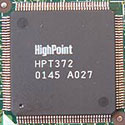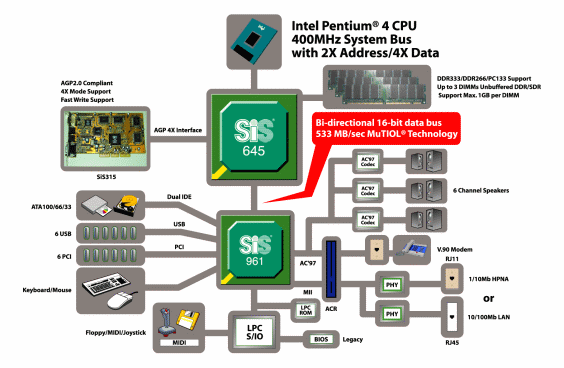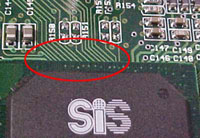The Basic Rundown on IDE RAID
RAID 0 is not really considered a true RAID since there isn't any data redundancy. RAID 0 takes two drives of the same
size/configuration and stripes them, meaning it makes one big drive out of two equal ones. This improves performance by cutting hard drive latency in half. Since the data is divided equally and
written on two hard drives it also increases the data bandwidth by two. The
reason it's not considered true RAID is because if one drive fails, all data is
lost.

RAID 1 on the other hand mirrors two drives of the
same size, so in theory if one drive fails, the other will take over as the
primary hard drive and the system can continue to operate normally. This is what
is supposed to happen with a SCSI hard drive setup and it actually works pretty
well there.
The IDE sub system doesn't
allow hard drives to be disconnected while the computer is still powered up and
in use like SCSI can unless you have a special HDD tray. Generally, when
one IDE drive fails the system usually locks up anyway. The data is safe
since it's mirrored on the other drive which is the real benefit.
Finally, with RAID 0+1 you need four hard drives of the same
configuration/size. What RAID 0+1 does is stripes two sets of two hard drives
with one set given RAID 0 status, and the other RAID 1. What this does is
offer the best of both worlds, the high performance of RAID 0, with 100% data
redundancy of RAID 1. Hence the name RAID 0+1. The only downside is the need for
four identical hard drives for 1/4 the total storage space.
Epox has jumped on the SiS bandwagon early and adopted the
SiS 645 for its EP-4DSA+ motherboard. DDR chipsets still really don't offer enough memory
bandwidth to keep a Pentium 4 happy, but they are a big step up from SDRAM.
Running at a 400 MHz
FSB, Pentium 4 processors demand 3.2 GB/s of memory bandwidth, however PC2100 DDR only
offers 2.1 GB/s. DDR333 a.k.a. PC2700 is heading in the right direction, but
as you can see, 2.7 GB/s is still 500 MB/s shy of the required 3.2 GB/s.

The SiS 645 northbridge/SiS 961 southbridge combo is very
powerful with a dedicated 16 bit data bus between the northbridge and southbrige
that offers 533 MB/s worth of bandwidth.
SiS have set it up this way because back in the day
of the i440LX/BX having the two chipsets communicate through the PCI bus
was fine, but nowadays the PCI bus is kind of saturated
with other components. Since things are always getting faster and the name
of the game is bandwidth, SiS didn't want the Northbridge and Southbridge to have
to fight for the measly 13MB bandwidth the PCI bus offers. This
is why SiS have decided to have a dedicated system bus for their
chipset.

Circled is the 16bit data
bus.
